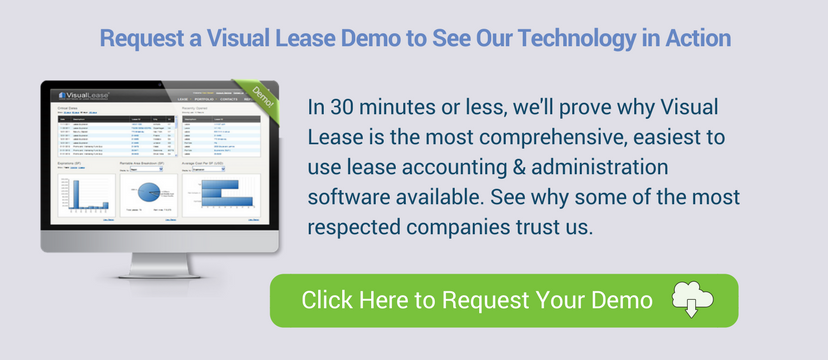Why measure and optimize equipment lease performance?
Most large, global organizations have some form of management and oversight in place for their real estate leases. After all, those leases represent millions of dollars and you want to make sure you’re getting the best value for your investment. But up until now, equipment leases have been under the radar.
That’s partly because of the de-centralized nature of equipment lease procurement and management: there could be hundreds of people, working in many different functions and regions, leasing different types of equipment. There’s no one group overseeing equipment leasing throughout the organization.
Also, equipment assets, unlike real estate, tend to move around and are harder to track. It’s much more likely that leased equipment will get lost, stolen or damaged before the end of the lease.
As a result, few companies have bothered measuring equipment lease performance, even though they may have many thousands of equipment leases globally. That’s changing now because of the new FASB and IFRS standards for equipment lease accounting.
Starting at the end of this year for public companies, all equipment leases get brought onto financial balance sheets and reports. That means they are now visible. Equipment lease performance will be increasingly scrutinized by financial leadership, external auditors, and investors.
Will you be able to explain why you’re spending so much to lease equipment? Let’s take a closer look at all the ways you waste money without centralized lease management for equipment. Then we’ll show you how you can take control of the situation with something you’re already doing: collecting equipment lease data for FASB.
How does poor equipment lease management cost you?
There are great reasons why companies choose to lease equipment instead of buying it. Leasing improves cash flow and makes budgets more flexible. It also allows you to get the benefits of new equipment and technology sooner than you might if you purchased equipment assets.
However, the financial benefits of leasing often disappear without careful oversight to prevent mistakes and wasted expense. For example:
- Failing to renew equipment leases by the option date and having to pay more for the renewal.
- Making poor decisions about purchase options.
- Agreeing to leases with terms that cost you more than you’re saving.
- Continuing to make lease payments after the lease expires.
- Failing to terminate leases for equipment that’s no longer in use.
- Paying the wrong amounts, especially for variable payment leases.
These are just a few of the ways your organization loses money without centralized equipment lease management and oversight in place.
The good news is, you can use the lease accounting data you’re collecting for FASB to help you analyze the effectiveness of your lease decisions. Then you can use that information to put standardized policies and procedures into practice that improve performance.
Tap into FASB data & technology to measure equipment lease performance
Like most organizations, you’re probably scrambling to collect and centralize all the lease data needed for compliance with the new FASB and/or IFRS standards. And your organization is probably investing in equipment lease accounting software to perform calculations, send journal entries to your GL system and produce disclosure reports. This situation can be a great opportunity to use that lease data and technology to your advantage.
First of all, you’ll need a central repository that captures ALL your equipment lease data, not just what’s required for FASB.
Also, choose equipment lease software that does more than accounting. For the same price or even less, you can get a comprehensive platform that helps you manage equipment leases (and real estate leases too) as well as handle the accounting.
Learn more: Equipment and Property Lease Accounting: Can One System Do Both?
Here’s what to look for:
Asset-level equipment lease tracking. Some products only track leases at the contract level. But equipment lease contracts often include hundreds of individual assets on the same contract. To properly manage your leased assets, you need to be able to track serial numbers, locations, and other data points associated with each item on the contract.
Easy customization. For a large global organization, you need to organize your system and your data according to the way you work. Make sure you’ll be able to make changes as your company makes structural changes such as mergers or acquisitions.
Flexible reporting. To get the intelligence you need to improve your lease performance, you’ll need the ability to slice and dice equipment data by a variety of criteria.
Intelligent alerts. To prevent missing critical lease option dates, set up alerts to notify lease managers in time to act.
Equipment lease audits. Validate all lease payments against lease contract terms and avoid overpaying.
With your centralized lease data repository and management technology in place, you’ll be able to create reports that reveal the true cost of your equipment leases.
Want to see how that works in Visual Lease? Schedule a personalized demo.
Use lease intelligence to develop standards
With the right lease data at your fingertips and a comprehensive leasing system, you can:
- Find out which types of lease structures and lease terms provide the best financial return.
- Break down equipment lease performance by regions, business units, type of asset, asset manager, or any other criteria that helps you compare performance.
- Find out where you’re losing money.
Here are just a few ways you can use that intelligence to standardize equipment lease operations across your organization and improve performance:
- Develop policies for negotiating lease terms for different types of assets.
- Set up lease approval requirements to make sure policies are enforced.
- Establish timelines and procedures (and assign responsibility) for regularly updating equipment lease data. That should include the location of leased assets and usage status.
- Set up procedures for handling end-of-term and early lease terminations.
- Track and compare the performance of people and groups responsible for lease procurement and management.
Don’t miss this opportunity to take control of your equipment leasing and stop wasting money. The experts at Visual Lease can help you get the right data and analytics in place to drive cost-effective process improvements.

























